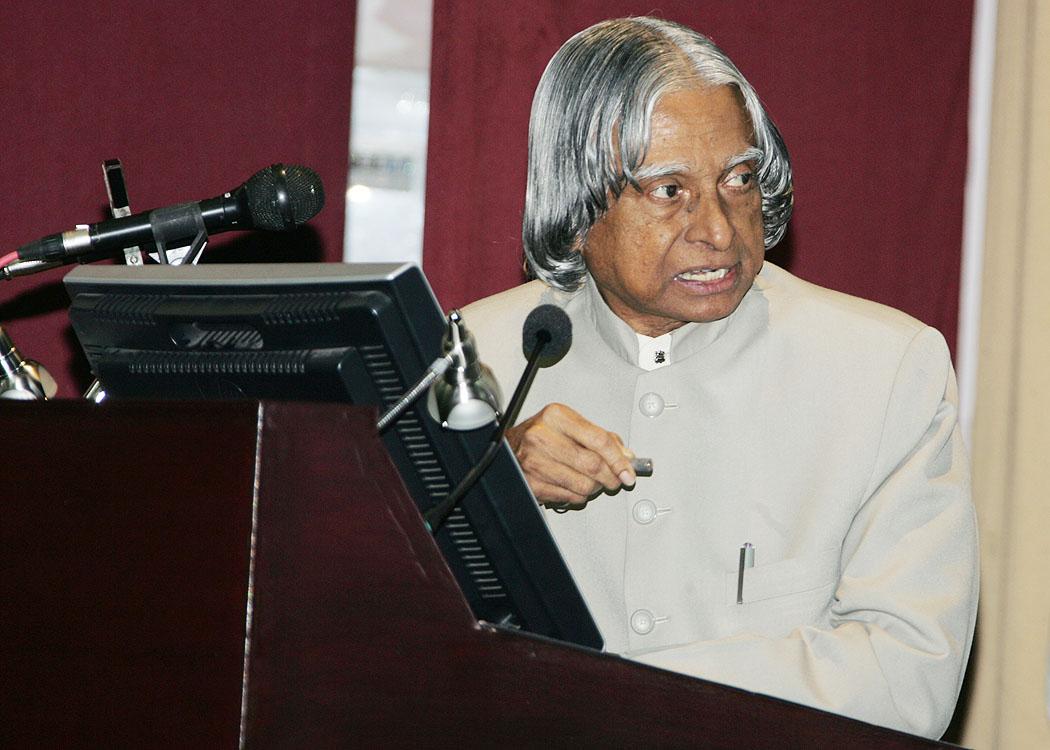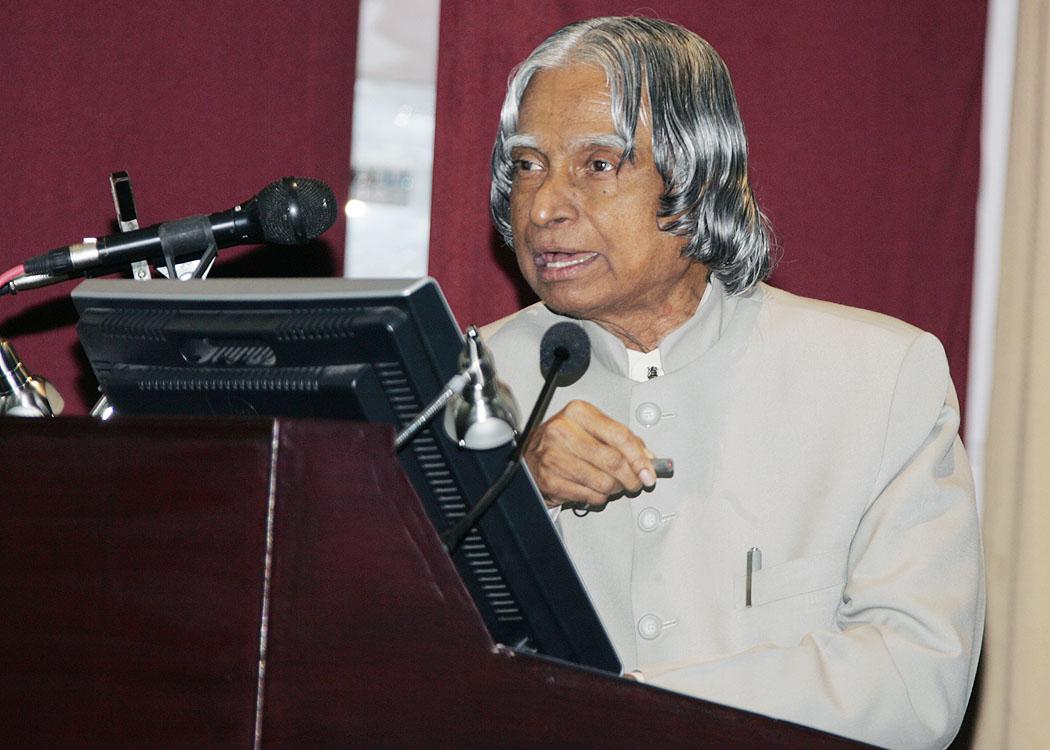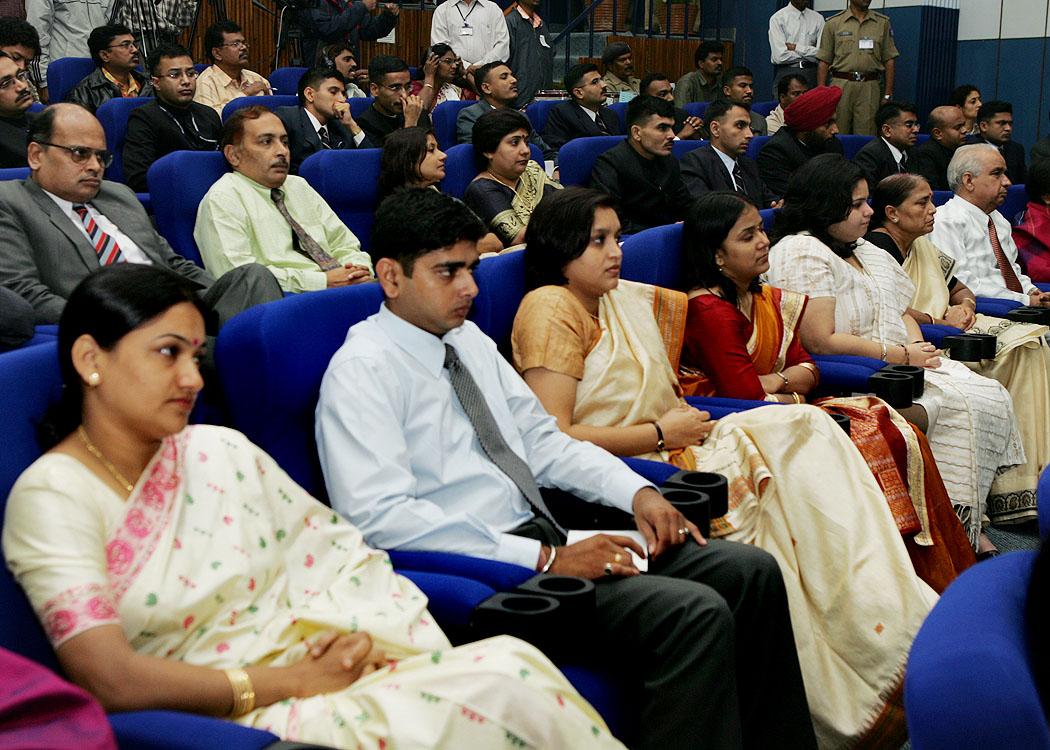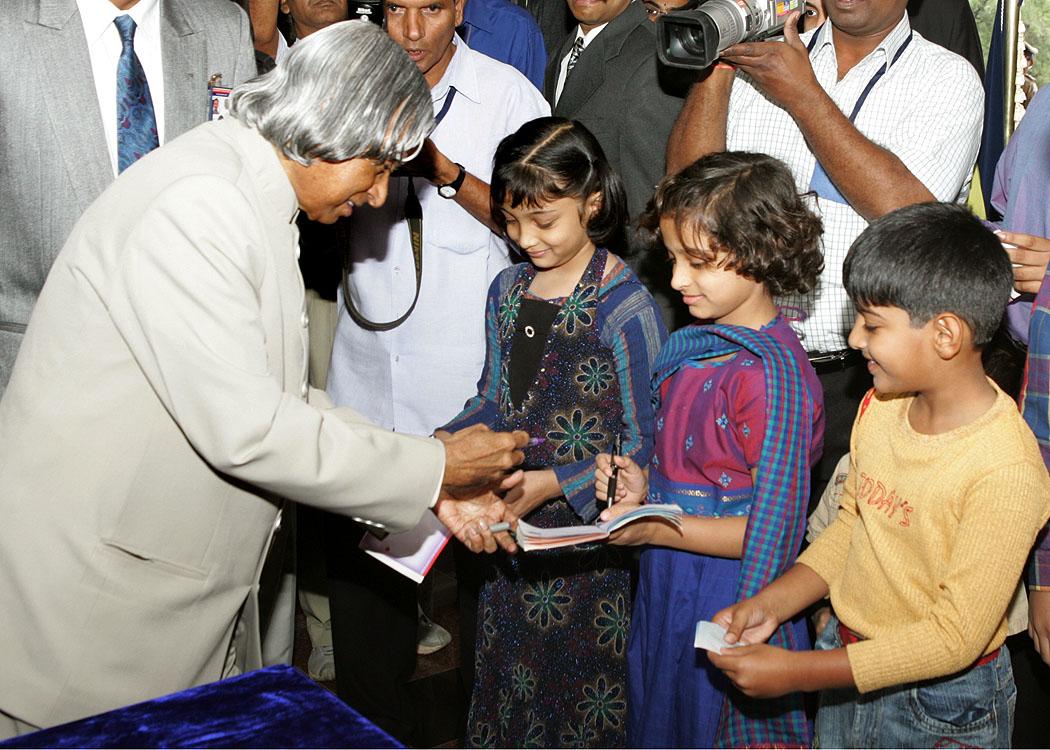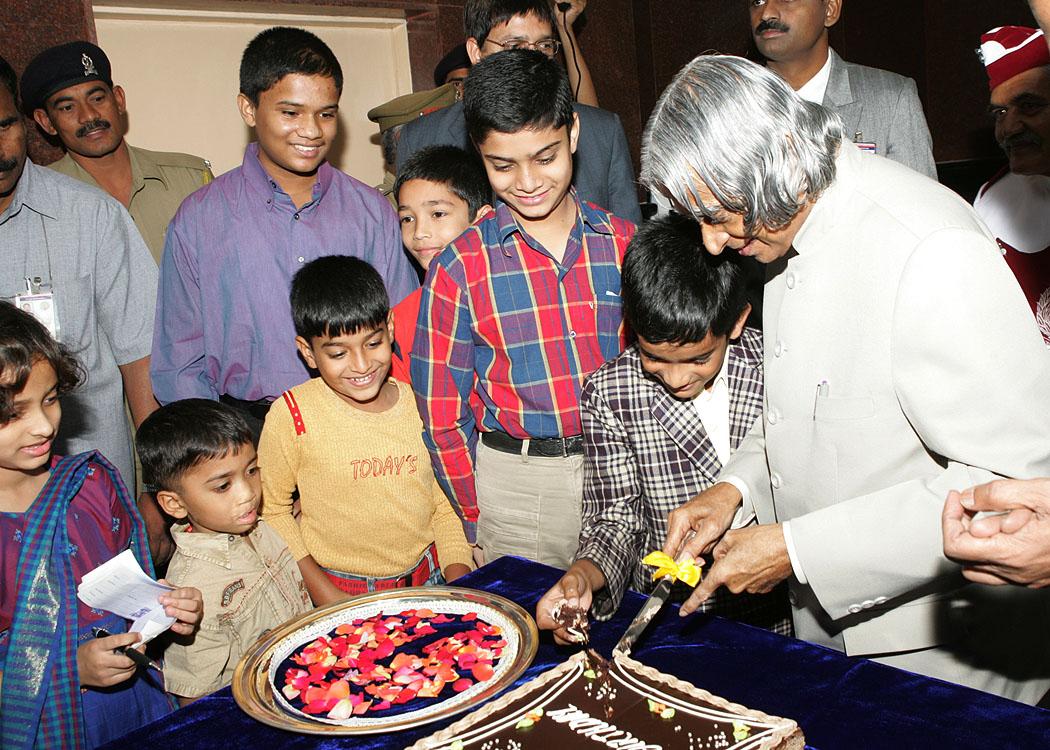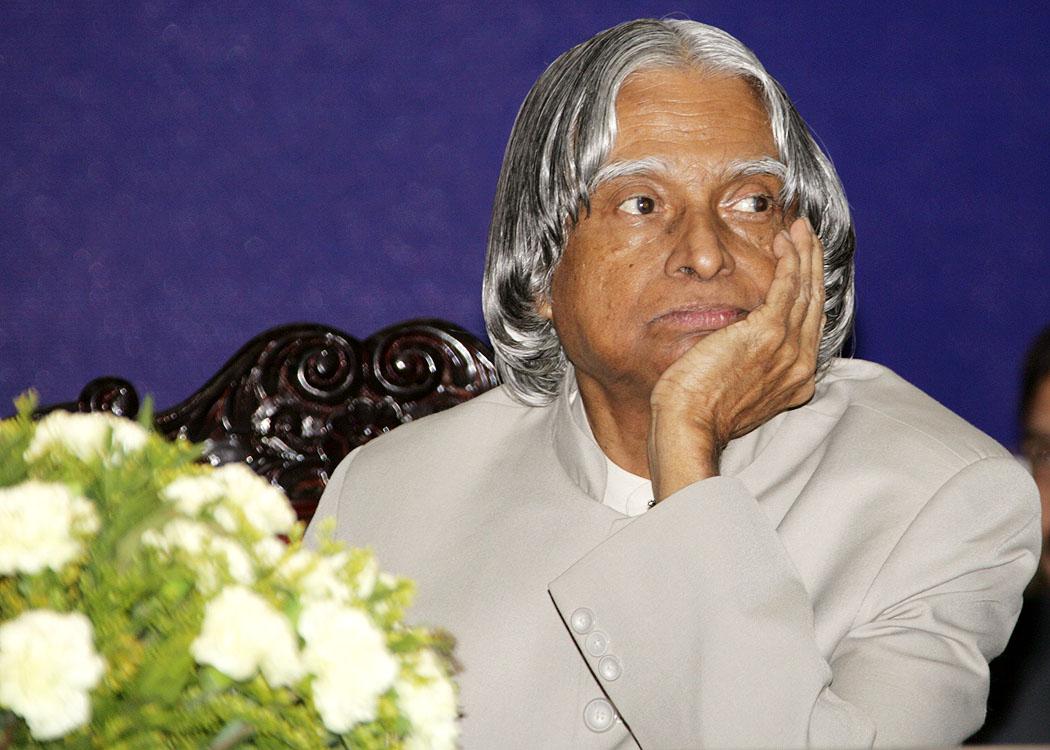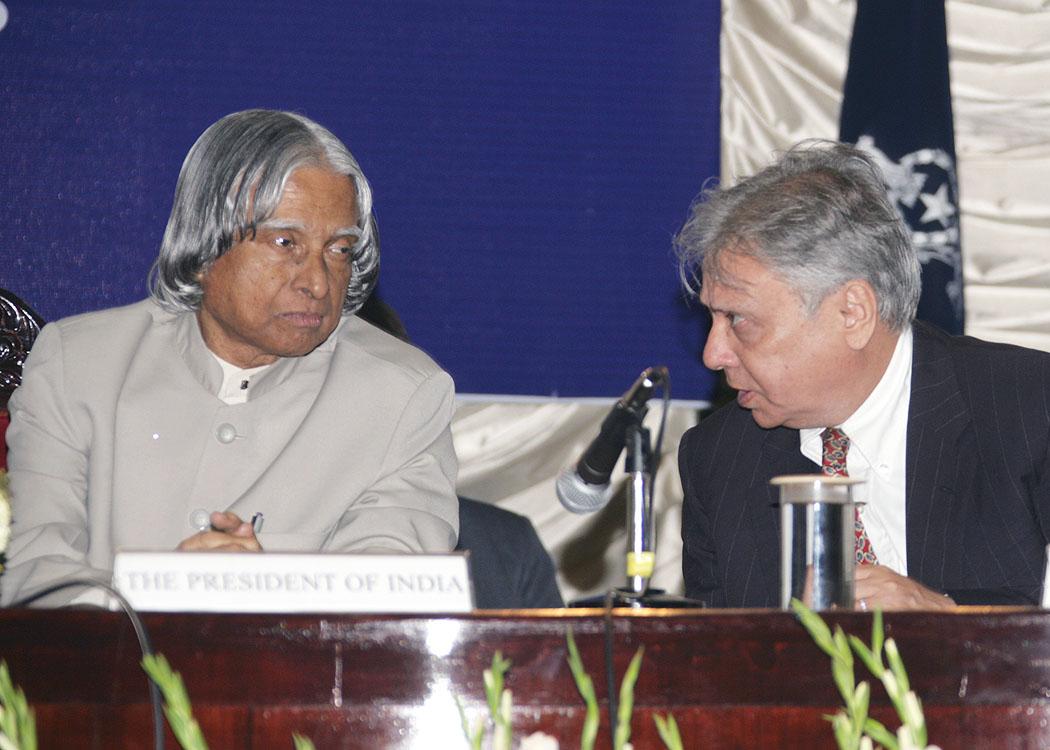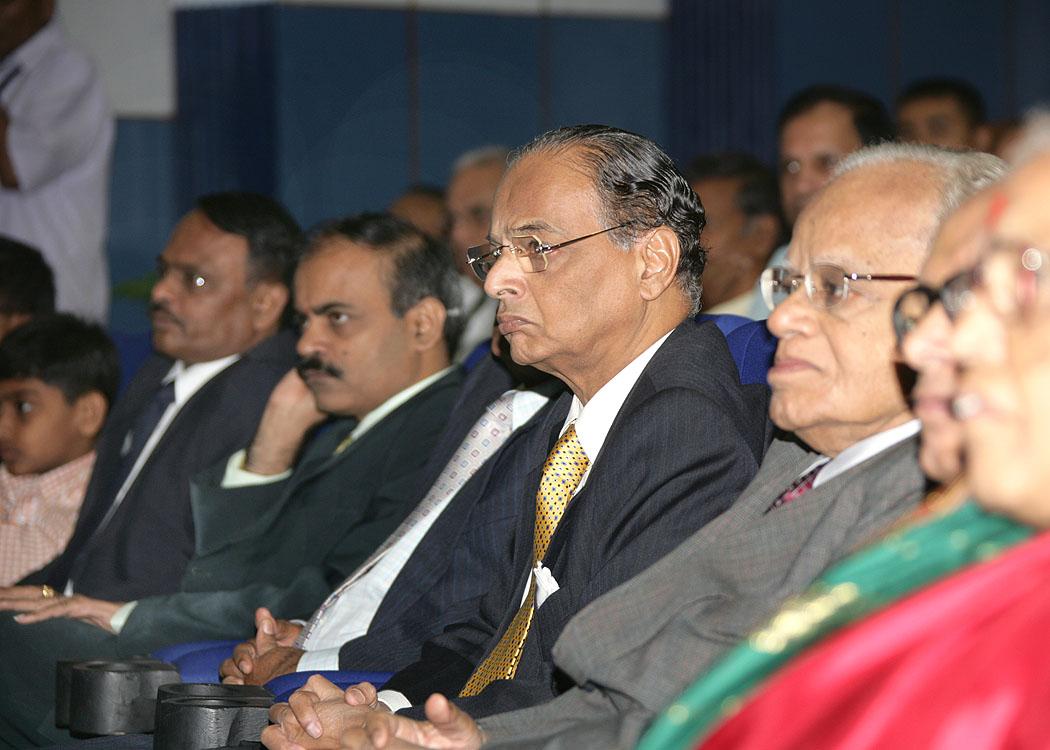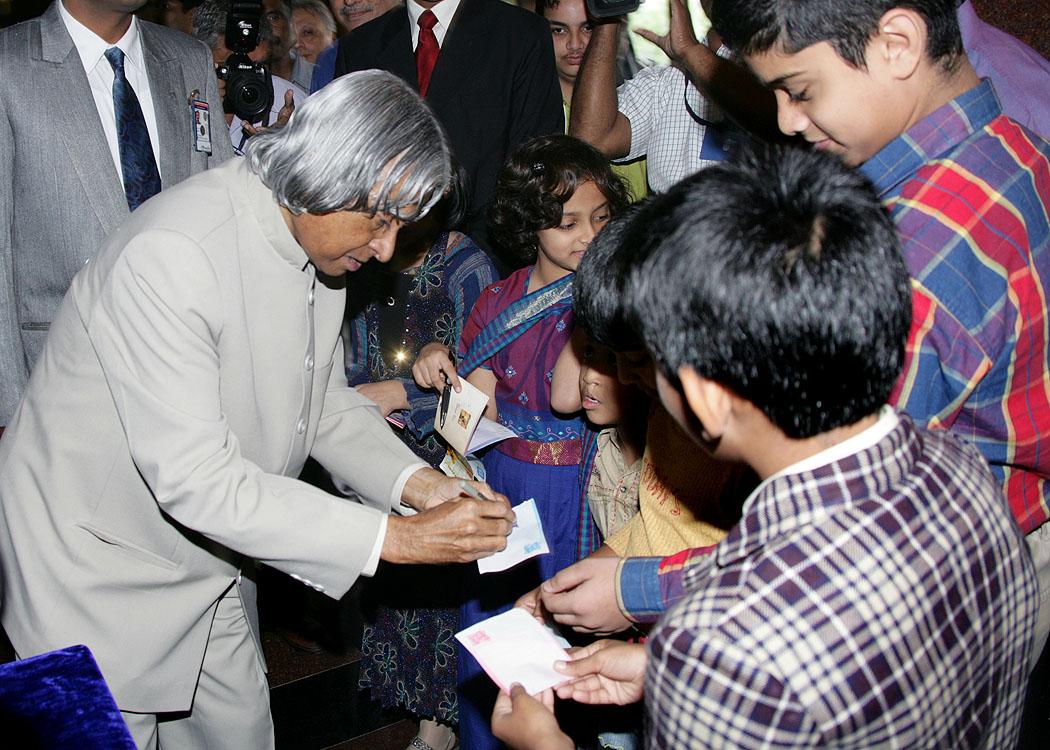Sardar Vallabhbhai Patel Memorial Lecture At The Sardar Vallabhbhai Patel National Police Academy, Hyderabad
Hyderabad : 15-10-2005
National Development:Police a Partner
I am delighted to be with you and deliver the Sardar Patel Memorial Lecture. My greetings to Director, Faculty Members and all graduating police officers. The name Sardar Patel immediately brings in front of me the pre-independent India and integration of the Nation for development during the beginning of post independent India. Both these phases of Indian history had seen many events and leaders. Sardar Patel had given a unique leadership in firm decision-making and shaping the decisions to time bound actions. Our young people in different fields have in front of them Sardar Patel's life as a doctrine for leadership. Sardar Patel's pioneering contribution in the development of Police System for the nation is very important milestone. I have selected the topic for this lecture "National Development: Police a Partner".
Our National mission - challenges
Our nation is going through a major challenge of uplifting of 260 million people who are below the poverty line and also to give better life for many millions who are on the border line of poverty or just above the poverty line. They need decent habitat, they need work with reasonable income, they need food, they need health care, and they need education and finally resulting into a good life. Our GDP is growing at more than 7% per annum on an average. Whereas, the economists suggest that to uplift the people from below the poverty line, our economy has to grow at the rate of 10% per annum consistently, for over a decade.
Integrated action: To meet the need of one billion people, we have the mission of transforming India into a developed nation. We have identified five areas where India has a core competence for integrated action: (1) Agriculture and food processing (2) Reliable and Quality Electric power, Surface transport and Infrastructure for all parts of the country. (3) Education and Healthcare (4) Information and Communication Technology (5) Strategic sectors. These five areas are closely inter-related and if properly implemented, will lead to food, economic and national security of our country.
Engines for Growth: Emphasis should be on full utilization of natural and human resources of the nation to meet the demands of the modern society. We should also remember that about 50% of our population is young people with aspirations for better living. Value addition to Agriculture, Manufacturing and Service sectors, building the national core competence and technologies will lead to additional high income employment potential. The engines for growth will be accelerated by launching of the five national missions viz. water, energy, education and skills, infrastructure and employment generation that will enable achievement of 10% GDP growth rate per annum. It is possible to do so with ecological and economic sustainability.
With these aspects, we have already laid down the road map. The priority for the government is to convert the road map into various missions. While converting the vision into different missions we seem to have many thoughts and variety of routes to reach the goal. This is where there is a need to have a coherent thinking among all the members of the society, including the police force. All of us have to think that the nation is greater than an individual or an organization. All of us should believe, that "we can do it". The police force is indeed a partner in the Developed India missions.
What can be the vision of our Police force?
Police has an important role to play in realizing the objectives of competitive India, which I have just now described. Under these circumstances, I would like to discuss certain specific areas of concern regarding the police force. Also, I would like to give an ideal profile of Police force, which will play a pivotal role in the transformation of India to a developed nation.
Our police force needs to be a friendly, corruption free, responsible, tolerant to ambiguity and pressure, caring for the people with a sense of compassion and empathy, able to create confidence and win over the hearts of the people, be efficient and time conscious, stress tolerant, mentally and physically fit and robust, able to provide high quality leadership potential at all levels of hierarchy and be a model for conduct and discipline. If such a demand is exercised on the police force, how the accountability flows from highest level of the police force to the police constable? The nobility of management has to flow from the top. I had worked with in such great institutions. I am attempting an answer for this; you can further discuss the thoughts I am presenting.
What are our concerns?
I would like to share with you some of the immediate concerns which I have been getting through the interaction with the people, e-mails, and from other sources. The women in the country feel that they are not in a position to walk on the street freely after sunset in some parts of the country. In addition there are number of incidences of violence against women in many forms. During election process kidnapping, abduction and extortion has become a common practice in many States. Inter-state gangs launch themselves and conduct day light robbery and mercenary action. Problem of alienation has lead to terrorism and naxalism has spread to many states. With the tremendous application of the Information technology in various financial institutions and governance in this internet era cyber crimes has become the order of the day. Innovative methods are found by individuals and groups to create large scale scam and frauds in different parts of the country. Even educational institutions and medical institutions are not spared like leakage of question papers. Every election witnesses an episode of criminal attack on candidates, booth capturing, tampering with ballot boxes and methods to disturb the democratic election process. It is regrettable to know that the innocents are charged or accused, the actual culprits are sometimes allowed to go scot-free and use of third degree methods are used for interrogation of innocent persons and undue delay takes place in the criminal investigation process leading to vanishing of the evidence. No one wants to be a witness due to the sense of insecurity and lack of confidence in the legal and the police system. The jurisdiction issue many times results in not filing the FIR in time and gives the opportunity to the criminal to destroy all the evidence in the interim period.
Possible Solutions
I have been thinking some of the probable solutions which I would like to put forth for the consideration of police and other related departments for enhancing the image and the efficiency of our Police force.
Police force augmentation: I understand that in our country the present Police to People ratio stand at 1:938 whereas in UK the ratio is 1:412. There is definitely a message in this for augmenting the police force so that we reach at least to a ratio of 1:500 with in the next three to five years with various challenges in front of you. Technology can be used to optimize the size of the police force.
When we augment the force we have to ensure that the quality of the force through employing suitable modern psychometric and psychological methods of personality assessment and subsequently imparting adequate training including those of developing and nurturing the qualities required for an ideal police force which I have already mentioned.
Recruitment and Service Conditions: To attract and retain talented youth in the Police Force right from constable to officers, what we need is to design an attractive service conditions with suitable pay package and perks, career planning and advancement, housing, leave, children education, healthcare facilities and self-upgradation schemes. The pay package must be attractive enough to see that the police personnel at all levels will not succumb to extraneous consideration at any cost. While augmenting the Police force care may be taken to ensure that at least 10% of the police force is represented by women.
Training: The key to a successful police force lies in post-induction training and periodic upgradation of skills, technological skills and leadership skills at all stages of the career of the individual. The aim of the training should be to provide a cultural change among the total force through value based training, where ethical and moral values are also imparted. The organizational culture and behaviour should be made conducive to nurture and promote the values which are taught in the training institutions. The training package may include multi-level gender sensitive training to both women and men as a part of induction training to promote better understanding between men and women as a complimentary force with a common objective. They should become life long learners and autonomous leaders at all levels of Police organisation. The training package should improve the psychological approach to crime prevention and rehabilitation of delinquents. The rehabilitated delinquent may perhaps become ambassadors of peace and security promoters.
Motivation and organizational culture: The police force needs to promote an organizational culture where the concept of reward and punishment becomes the spirit of functioning of the organisation. This will be needed to sustain the motivation level of the personnel in the organisation. The physical fitness is an important pre-requisite for the smart police force. The training should ensure that the physical, mental and spiritual well-being becomes the part of the life style of police personnel. In view of the emerging stressful operations and overload, adequate rest and recuperation measures have to be planned as a part of the work schedule while deploying the police force in demanding activities.
Professionalism and modernization: As you are aware, during the last two decades, considerable growth and advancement has taken place in many technology areas relevant to police operations. These include Information and Communication technology, transportation, riot control devices, interrogation techniques and forensic investigations. There is a need to progressive induction of these state-of-the-art technologies into the modern police system. Also there is a need to provide adequate training to the personnel at different levels to improve the professionalism and enhance the operational efficiency of the system as a whole. This aspect must be kept in mind while augmenting the police force, which I have talked to you earlier. It may also be useful to consider exposing our police force to the international models where modernization has already taken place. This will enable faster assimilation of the technology and further improvement, where we can do better being a late starter. The concern must be the innovative approach to the application of sophisticated technologies in the operations.
Challenges in today's communication
In this world of alternative warfare, our nation's capabilities; say communication, rail and business infrastructure becomes exposed and vulnerable. In this changing scenario, the intelligence agencies and the police have to assume a completely different role. There is a need to have an integrated approach to ensure national security by a team effort of security forces and multi-level intelligence agencies working together. The people, who threaten our security and our peace, often can intermix with our public and may become indistinguishable though guided by adversaries from across the border. They use very high end technologies, much the same way as any common public could use. When the attacker is distributed within the system, things become extremely difficult to detect and arrest. Innovative flow charts have to be evolved with experience to find how this phenomenon is taking place and how the intelligence agencies can match.
Nuclear, biological and chemical agents are posing threat in view of the emerging international terrorism activities. Police force should be exposed to the technologies for the quick detection, personnel protection, first-aid and counter measures and decontamination of the areas.
Technology has a peculiar way of working with the society. Technology is first used for the upliftment of the society and increases its prosperity like nuclear energy, the same technology used by others to destroy human lives like nuclear bomb. The technologists then spend the rest of his life trying to deter the misuse of well intended developments. In the same way, the ICT which has been probably misused by unscrupulous elements can actually have been overcome by ICT itself. I am going to discuss briefly with you about the two possible and emerging uses of ICT for combating crime against the nation.
Open source intelligence
One of the major revolutions of information has been the advent of the World Wide Web. It contains a vast amount of information about people, corporate and nations. In the earlier days the intelligence information used to be gathered by field officers, working directly near the source of information. But today an intelligent mining of the data coming out in many newspapers, websites and so on, can give you ample information about possible groups, their intentions and their connectivities. A regular monitoring of the internet, could give you indicators of pre-formation activities of terrorists groups and their origins and their supporters.
Earth observations by Google Earth, most of you may or may not be aware that the high resolutions pictures are freely available on the internet provided by many sites including www.fas.org and Google earth; I am going to demonstrate the aerial pictures of some of the sensitive locations of India. Let us also look at similar areas elsewhere. You will realize that some of the developing countries, which are already in danger of terrorist attacks, have been singularly chosen to provide such high resolutions about them. When you look deeper into it, you would realize that the specific laws in some countries, regarding spatial observations over their territory and UN recommendations about the display of spatial observations is inadequate. I would urge all of you to discuss amongst yourself and come up with the possible solutions for the Government to take up.
Social networks
Few years back an experiment was tried out by the scientific community about what today we know as social networks. A letter to a doctor in Boston was posted without proper address but only with name and Boston. It was sent to the close friends of the originator, with a request to his friends saying that you pass it on to your close friends who may know this doctor; with this kind of idea the chain was started. On an average it reached the destination within six links. Though the world of communication is very big and millions and millions of phones are connected, millions and millions of people send email; we find that there is a structure in all of these. Whom did you contact is more important than what did you contact him for. This concept of social networks is the central to this that is communication. So the theme behind this is starting from any arbitrary person, we can identify the offending group of people, say smugglers, terrorists, money launderers with in a few links. The data mining and network monitoring technology, has grown so much that even the millions and millions of emails and telephones originating every day can be logged, analyzed and conclusions drawn.
Research input for Training
The National Police Academy has to play a role as a research centre in respect of Police intelligence, police administration, police management and networking. This Academy deals only with the training of IPS officers. However, these officers finally have to work with different levels of officers in their jurisdiction coming from variety of cadres. Our police stations spread across the country also have to deal with different types of problems based on the characteristics of the region. The police academy can select 100 regions and conduct case studies relating to the special problems of the region, psychology of the police personnel, psychology of the people of the region, characteristics of the crime, technological inputs provided and connectivity between the regional police network with higher levels. These case studies should be able to bring out the special training needs of the personnel in the region needed to determine the humane approach to problem solving and crime reduction, equipment pattern to be used, safety precautions to be observed and the networking needs of the jurisdiction. The conduct of such case studies periodically will result in changing pattern of the local management strategy. Certain crimes are not particular to district, they are national and at times international. The case studies should govern the interface problems in such situations also. The case studies should become part of the training programme of the probationary police officers.
Functioning of the Police is still governed by the Police Act of 1861. Various Police Commissions, constituted by the Central Government and the State Governments at different times, have made number of recommendations. These include recommendations to better the quality of policing consistent with the aspirations of an independent nation and multi-ethnical society. Also recommendations were made to improve the working and living conditions of the police personnel and their careers. Few recommendations have been accepted and implemented till now. Presently 49 recommendations which are crucial to the policing reforms have been short listed by High Power Committee and are under the consideration of the Government for implementation.
There are two main aspects, one is how a police person looks at his/her career and living conditions, and second how a citizen looks at him as a person and as an organization. We are progressing and are maturing as a nation and a society and the changing times are also putting different kind of forces and processes. I suggest that National Police Academy can act as a Nodal Agency to carry out socio-economic research and provide updated information on this very important matter. The academy can integrate domain experts in this exercise and evolve useful strategies on an on-going basis. A web portal to receive feed back from police personnel and enlightened citizens and decimate information among police fraternity can also be launched. Home Ministry can tap from this knowledge pool. Home Ministry can also out source research projects of specific interests addressing national security issues.
Conclusion
I would like to conclude my lecture with the following five suggestions for the Indian police:
1. Nobility in management has to start from the top.
2. I visualize a police station in rural area, friendly to the policemen who work there and the people in its jurisdiction. It has to be remembered that equipping police has two components:
- Continuous knowledge provision -particularly to the police constables
- Equip them with latest technology and with training
3. All the police officers must remember that they should inject the pride in their profession among all the levels of the police force. They should take care of the service conditions and quality of life as is being practiced in many organisations in the country.
4. A Police e-Governance GRID is essential which will connect from police stations to the DGP office through G2G and G2C network. The district level SP office will have all the police stations in the district level jurisdiction connected to the nodal point. This will generate a new management style between the people, large force of police constables and the middle and top level police officials and enable a transparent police administration.
5. I have seen during my State visit to Switzerland and South Africa during the VVIP movements, there is no hold on traffic; a dynamic four member team using motor cycle provides on-line traffic clearance for uninterrupted movement of VVIP without unduly holding up the normal traffic. You may like to consider the model for implementation in your regions.
My best wishes to all the members of Sardar Vallabhai Patel National Police Academy in their mission of empowering the young police officers with the state-of-the-art training.

